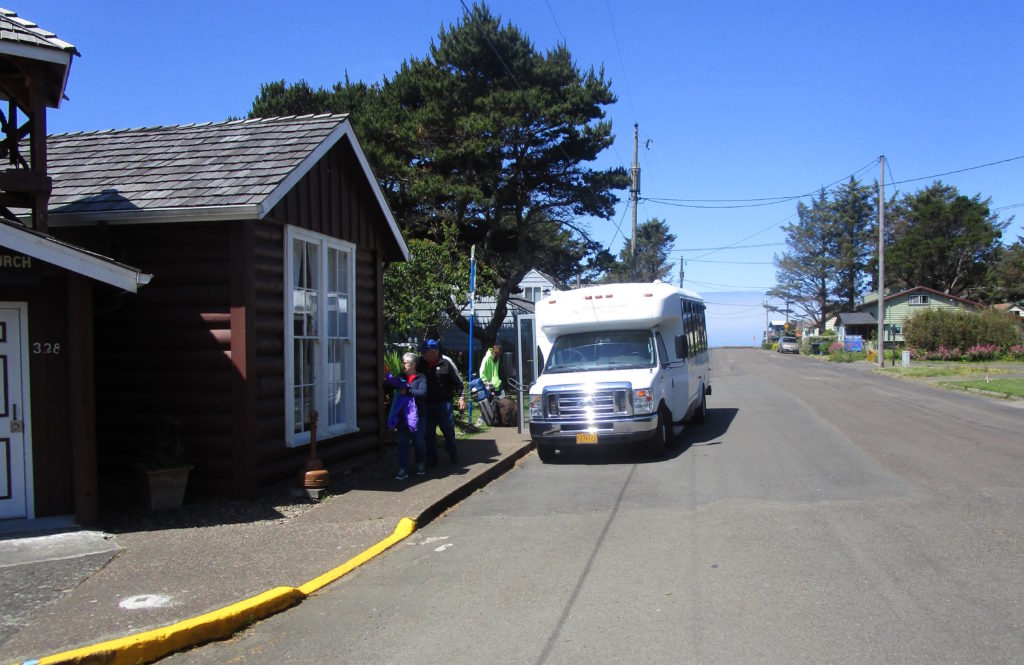
By QUINTON SMITH/YachatsNews.com
Alan Haring pulls away from the bus stop at the Little Log Church in downtown Yachats and heads south on U.S. Highway 101.
In 45 minutes – with one stop – his 10-passenger bus pulls up to a small shelter near a strip mall in Florence. Ten minutes later he starts up the bus and retraces the route north – one of four round trips Haring will make each weekday.
There’s just one passenger on board.
The 23-mile drive between the two coastal cities is one of the most beautiful along all of Highway 101, crossing two capes and passing by beaches and waysides along the Pacific Ocean.
But not many people are using the Florence-Yachats Connector, a nine-month-old $290,000 experiment to close the last missing link of public transportation along the Oregon coast.
Since it started last September – three months later than planned — the service has carried just 839 people between the two cities. That’s an average of four people a day – or one person per trip — over 210 weekdays of service from September through June.
Haring, who handles all the driving, says some days – especially in the winter — there’s no one on board. In January and February only 32 people rode each month. That bumped up to 124 in June as weather improved. Fares are $2.50 one way, per person or $5 for an all-day pass.

After getting money to start the one-year pilot project last September, the state of Oregon is giving Eugene-based Lane Transit District $40,000 more to continue the service through the summer.
Then, if the Oregon Transportation Commission approves a $450,000 grant in August, the Lane Council of Governments will take over the project for two years starting Oct. 1.
The Oregon Department of Transportation is paying for the pilot program and appreciates Lane Transit stepping up to operate it.
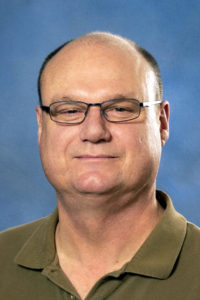
But the agency realizes there are issues, said Mark Bernard, who oversees its public transit programs for the mid-Oregon coast and southern Willamette Valley, and Lane Transit wants to concentrate on its core service area around Eugene.
“The past is what it is,” Bernard said. “It was an imperfect rollout for the pilot. That’s why we need to continue this program … to really see if it works.
“The summer will be the key – to give a real clear picture of what we might see,” he said. “The state of Oregon has a vested interest in this succeeding. But if it doesn’t work, then it won’t receive funding.”
The philosophy and reality
For Oregon and regional transit officials the ultimate goal is to have an unbroken network of bus systems crisscrossing the state along its major roads and highways. Although there are some lonely routes and inconvenient transfers, you can ride a bus from Astoria to Ontario, from Portland to Klamath Falls.
But there is one missing link in Oregon – that 23 miles separating Yachats and Florence along Highway 101.
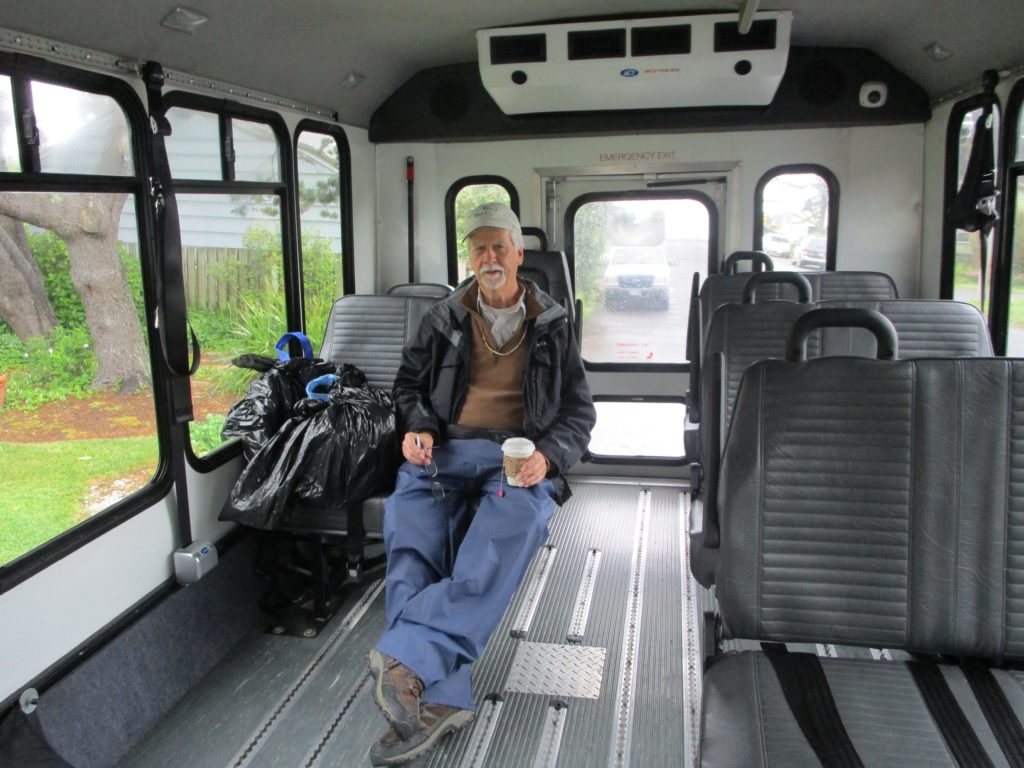
Three years ago state officials began looking for a way to close that gap and found a partner in Lane Transit, whose buses connect with private carriers running between Eugene and the coast and helps fund the Rhody Express bus system in Florence.
Lincoln County also has a rudimentary bus system running between all the county’s cities and provides connections to private carriers heading north to Astoria and east to Corvallis.
But there was nothing from Yachats going south.
The state wanted to give people – locals, long-distance travelers and tourists – the option of taking a bus from Point A to Point B, said Bernard.
“Do you want transportation choices?” he asked. “What about people without cars, the transit-dependent people?”
Lane Transit agreed to run the pilot program. It started planning in 2017, talking to people in Florence and Yachats, conducting an online survey and trying to gauge interest and need.
Some $100,000 of the grant was used to purchase and equip a new bus, but it didn’t arrive until this month.
The connector needed to link up with Florence’s Rhody Express system, but where? Lane Transit chose a bus stop near Grocery Outlet where people can catch a bus on the north or south loops of Florence’s system.
The service – awarded to River Cities Taxi, which also operates the Rhody Express — was supposed to start last June. But problems in getting a temporary bus with a lift for wheelchairs and other complications delayed the start until September – after the coast’s best weather and tourist season.
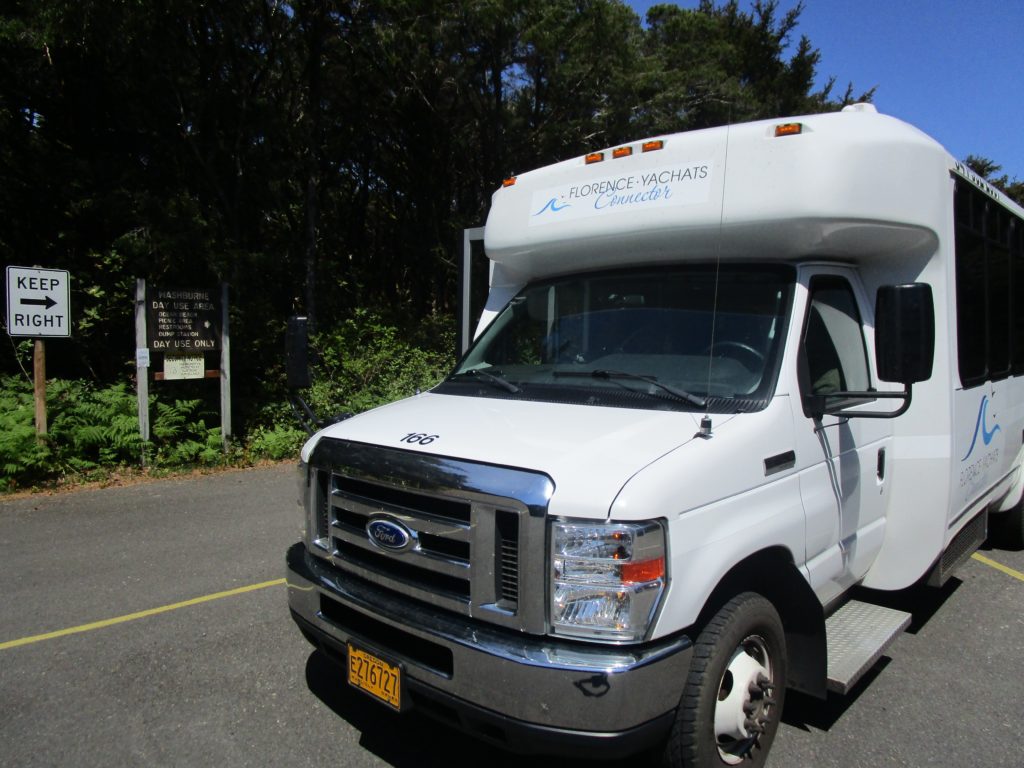
While it put flyers announcing the service around both cities, Lane Transit did little else to promote the new service. The first two months of service saw 137 and 136 riders, respectively, but that dropped off to 32 in January and February. In May ridership was 119, increasing by five for June.
“Ridership directly parallels the weather,” said John Ahlen, a Lane Transit manager overseeing the Yachats-Florence connector.
The bus doesn’t operate on weekends, the busiest time for tourists or when locals might go shopping, out to eat or attend an event in either town.
There are also questions whether a bus terminus on the north edge of Florence rather than in Old Town or near the new Florence City Hall is the best location.
“Transfers are killers” for higher use of public transit, says Bernard.
What’s next?
The Lane Council of Governments is poised to take over the Florence-Yachats Connector in October. In early June an ODOT advisory committee ranked its application for a $450,000 grant to run the system as No. 1 of 17 requests it funded.
The No. 2-ranked application was LCOG’s $1.23 million request to operate regular bus service between Florence and Eugene, which planners expect to be quite popular.
In addition, Coos County is asking for money to establish regular service – a private company offers it now – between North Bend and Florence.
The effect, say ODOT and LCOG planners, is to establish a more coherent and reliable system that runs north, south, east through Florence.
“We’re excited about making Florence a transportation hub,” said Kelly Clarke, the LCOG transportation planner heading up the projects. “We’re all working together to make it a seamless project.”
While the agreement with Lane Transit is in place to run the Florence-Yachats Connector through September and the Lane Council of Governments is all but guaranteed to pick it up in October, the real decision of continuing the service will come in two years.
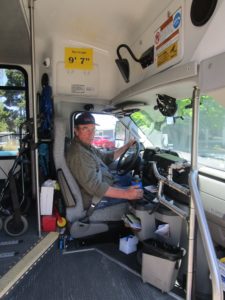
Clarke said her agency would like to expand the Yachats-Florence service to weekends, especially after the Eugene-Florence route starts operating next spring. It plans to establish an advisory group to get better feedback, community expectations and advice on any changes.
“The good thing on pilot programs is that you can make adjustments easier to place, time and days,” she said.
There are no stated ridership goals – numbers to meet – in any of the grant applications.
Bernard believes “locals” from Yachats and Florence should constitute half of the riders. Tourists and travelers “will be the ones who lift this service,” he said.
“And Oregon is attracting a lot of visitors,” Bernard said. “Do we want to give them a choice of getting out of their cars?”
Bernard believes LCOG has to aggressively market the bus service, especially after it gets the Florence-to-Eugene link up and running, and examine adding weekend service.
And ridership?
Bernard would like to see an average of 500 riders a month, more than three times its current, highest monthly ridership.
“The big decision point will come in two years,” Bernard said. “I’m not pretending that this service is going to float. And if it doesn’t float we’re not going to fund it any more.”
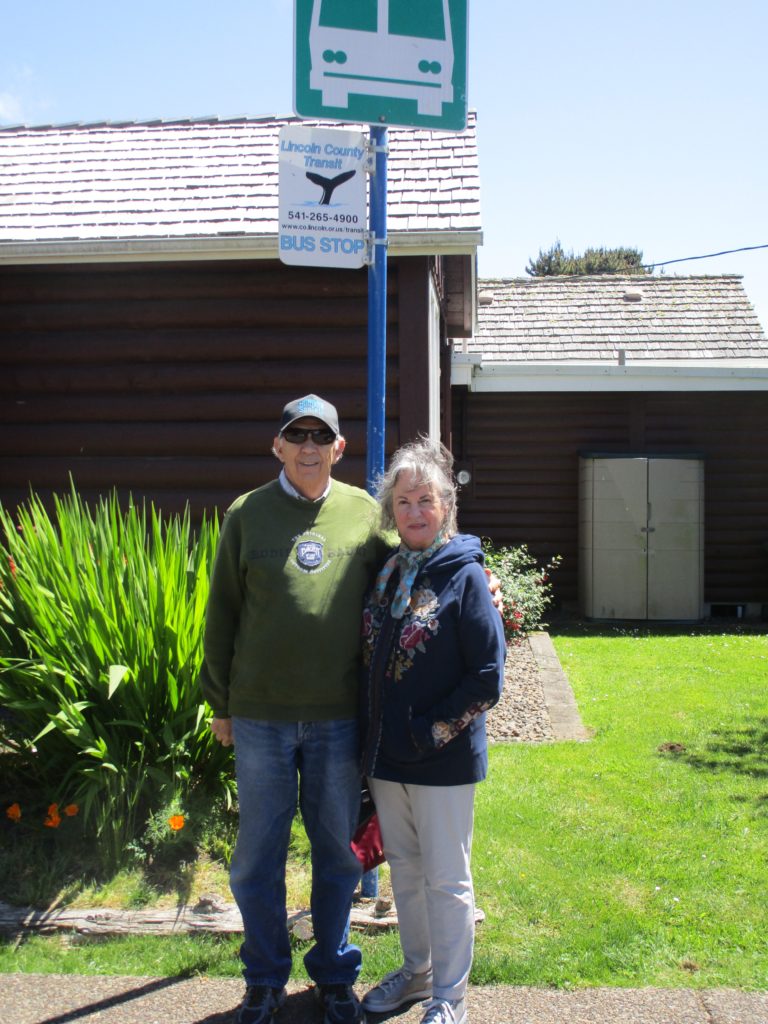




I wish we knew abiut this before! I’m so grateful this article was put on the Waldport Community page on fb! My son plays music in Eugene. Last time he took a bus from Eugene to Albany, straight across 20 to Newport, then home to Waldport. It was long & expensive! Thanks to you he can play in Eugene again often! The key is getting the word out! How about a spot on local news?! Tjank you, Linda Martin